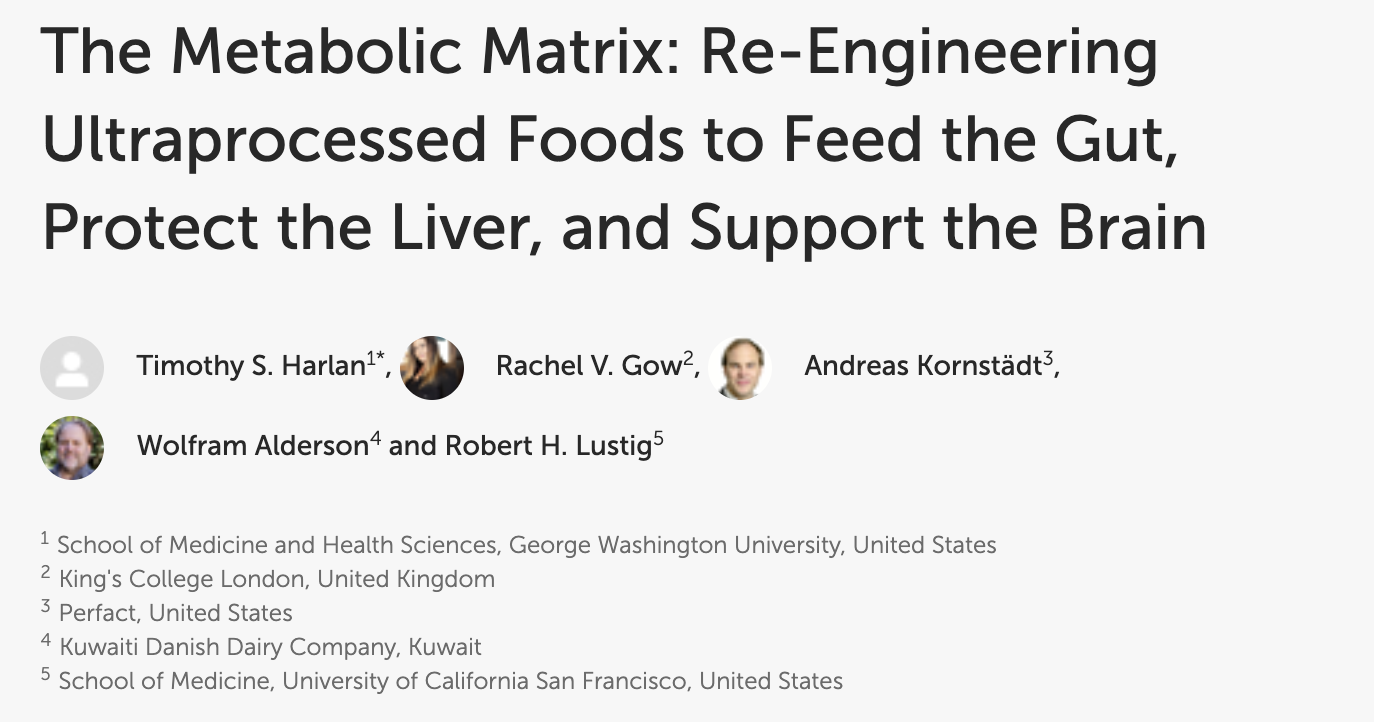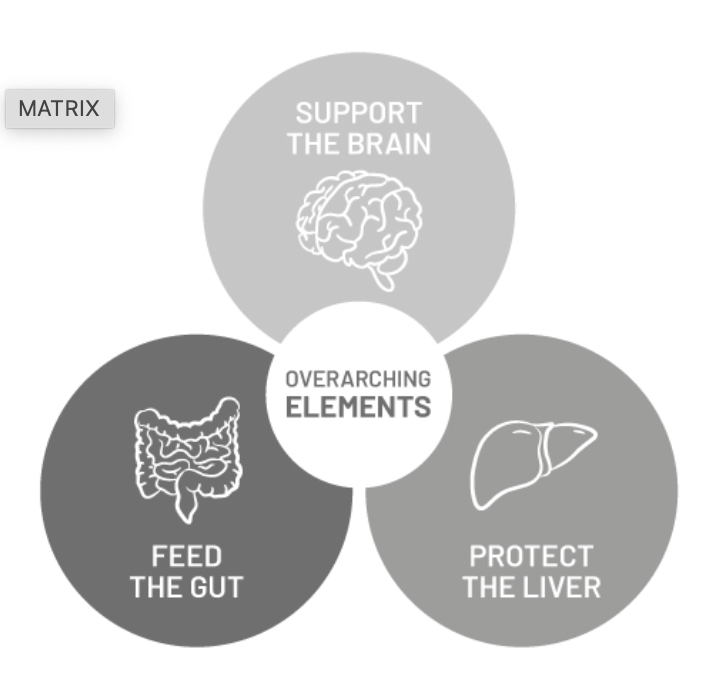Methods Paper
Ultraprocessed food is established as a metabolic disruptor acting to increase adiposity, reduce mitochondrial efficiency, drive insulin resistance, alter growth, and contribute to human morbidity and mortality. Consumer packaged goods (CPG) companies are beginning to understand the detrimental impact of the food they market, and have employed substitution strategies to reduce salt, sugar, and fat. However, the harms of ultraprocessed foods are far more complex than any single component, and are not ameliorated by such simple substitutions. Over the past two years, the authors have worked with Kuwaiti Danish Dairy Company (KDD) to conduct a comprehensive scientific evaluation of their entire commercial food and beverage portfolio. Assay of the macronutrients, micronutrients, additives, and toxins contained in each of their products was undertaken to determine the precise nature of each product’s ingredients as well as the health impacts of processing. The authors formed a Scientific Advisory Team (SAT) and developed a tiered “Metabolic Matrix” founded in three science-based principles: 1) protect the liver, 2) feed the gut, and 3) support the brain. The Metabolic Matrix categorizes each product and provides the criteria, metrics, and recommendations for improvement or reformulation. Real-time consultation with the KDD Executive and Operations teams was vital to see these procedures through to fruition. This scientific exercise has enabled KDD to lay the groundwork for improving the health, well-being, and sustainability of their entire product line, while maintaining flavor, economic, and fiscal viability. This process is easily transferrable, and we are sharing this effort and its approaches as a proof-of-concept. The key aim of our work is to not only make ultraprocessed food healthier but to urge other food companies to implement similar analysis and reformulation of their product lines to improve the metabolic health and well-being of consumers worldwide.
Read the full open-access paper in Frontiers of Nutrition: Sec. Nutrition and Food Science Technology
Volume 10 – 2023 | https://www.frontiersin.org/articles/10.3389/fnut.2023.1098453/full
Scientific References Supporting the Three Pillars of the Metabolic Matrix
References cited in the Methods Paper: https://metabolicmatrix.info/methods-paper-references/
Supplementary References: https://metabolicmatrix.info/supplementary-references/
Science supporting the three pillars of the Metabolic Matrix
Protect the Liver: https://metabolicmatrix.info/protect-the-liver/
Feed the Gut: https://metabolicmatrix.info/feed-the-gut/
Support the Brain: https://metabolicmatrix.info/support-the-brain/
Sweetener References: https://metabolicmatrix.info/sweetener-references
Sweetener Review: https://metabolicmatrix.info/sweetener-review/
Evidenced-based critique and evaluation of omega-6 plant-based oils: https://metabolicmatrix.info/evidenced-based-critique-and-evaluation-of-omega-6-plant-based-oils/
This methods paper has been cited in the following publications:
- Our Hidden Enemy: Ultra-Processed Foods, Inflammation, and the Battle for Heart Health (Article in Cureus, published October 2023)
- Association of ultraprocessed foods consumption and cognitive function among children aged 4–7 years: a cross-sectional data analysis (Article in Frontiers in Nutrition, published October 2023)
- Cross-Classification Analysis of Food Products Based on Nutritional Quality and Degree of Processing (Article in Nutrients, published July 2023)



